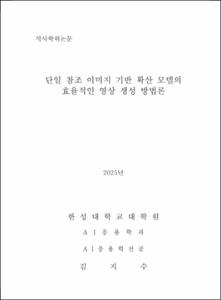단일 참조 이미지 기반 확산 모델의 효율적인 영상 생성 방법론
= Efficient Image Synthesis Method Using Single Reference Image-Based Diffusion Model
- Files in This Item:
-
-
Download
 200000851521.pdf
기타 데이터 / 1.24 MB / Adobe PDF
200000851521.pdf
기타 데이터 / 1.24 MB / Adobe PDF
-
Items in Repository are protected by copyright, with all rights reserved, unless otherwise indicated.